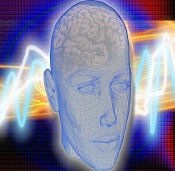Apps para estimar dosis de radiación en radiología médica y dental: una revisión descriptiva
Contenido principal del artículo
Las aplicaciones (Apps) web o móviles han cobrado progresiva importancia como método de enseñanza-aprendizaje en educación médica, desde la masificación del internet y los teléfonos inteligentes. El objetivo de esta revisión es describir tres Apps, referenciadas en artículos científicos, que pueden utilizarse para estimar a priori la dosis de radiación y/o el riesgo de cáncer en estudios médico-dentales. Para tanto, se hizo una búsqueda bibliográfica en PubMed y Scielo, usando como palabras clave en español e inglés: radiación, dosis, efectos biológicos, educación médica, App, odontología, medicina. Se seleccionaron 61 artículos por ser de interés para la temática propuesta, con al el 50% de ellos, publicados en 2017 – 2022. Los resultados muestran que el uso de Apps en entornos educativos de la salud mejora los conocimientos de estudiantes y ayuda a los profesionales como herramientas de consulta rápida. De las 3 Apps revisadas (Passport Radiation, CALDose_X y Dental_Dose), la primera es la más antigua y actualmente indisponible. Todas ofrecen datos, en distintos órganos y tipos de exámenes, de dosis equivalente humanos, dosis efectiva y, a excepción de Dental_Dose, una estimación del riesgo de cáncer. CALDose_X es la única que puede configurarse en dos idiomas (inglés y portugués). Asimismo, ambas Apps muestran visualizaciones de las estructuras orgánicas y del campo de radiación. A diferencia de Dental_Dose, debe ser instalada CALDose_X. CALDose_X y Dental_Dose han sido referenciada por al menos 3 trabajos científicos, demostrando, con ello, aceptación en la comunidad académica. Dental_Dose está dedicada al área odontológica, mientras CALDose_X al ámbito médico. Se concluye que CALDose_X y Dental_Dose son herramientas valiosas y fiables para estimar con precisión la dosis equivalente y efectiva en distintos órganos del cuerpo
- Aplicaciones de la informática médica
- Dosis de radiación
- Personal de odontología
- Fobia al tratamiento odontológico
- Riesgo
Wilches Visbal JH, Castillo Pedraza MC, Khoury HJ. Protección Radiológica en Radiología Dental. CES Odontol. 2021;34(1):52-67. Disponible en: https://revistas.ces.edu.co:443/index.php/odontologia/article/view/5557
Al Faleh W, Bin Mubayrik A, Al Dosary S, Almthen H, Almatrafi R. Public Perception and Viewpoints of Dental Radiograph Prescriptions and Dentists’ Safety Protection Practice. Clin Cosmet Investig Dent. 2020;12:533-9. Disponible en: https://www.dovepress.com/public-perception-and-viewpoints-of-dental-radiograph-prescriptions-an-peer-reviewed-article-CCIDE
Woodward TM. Dental Radiology. Top Companion Anim Med. 2009;24(1):20-36. Disponible en: https://linkinghub.elsevier.com/retrieve/pii/S1938973608001062
Andisco D, Blanco S, Buzzi AE. Dosimetría en radiología. Rev Argentina Radiol. 2014;78(2):114-7. Disponible en: http://linkinghub.elsevier.com/retrieve/pii/S004876191400012X
Lee H, Badal A. A Review of Doses for Dental Imaging in 2010–2020 and Development of a Web Dose Calculator. Costa ALF, editor. Radiol Res Pract. 2021;2021:1-18. Disponible en: https://www.hindawi.com/journals/rrp/2021/6924314/
RadiologyInfo. ¿Qué es la dosis de radiación? [Internet]. 2022 [citado 20 de junio de 2022]. Disponible en: https://www.radiologyinfo.org/es/info/safety-hiw_09
Berry K. Ask Experts Answer to Question #13720 Submitted to «Ask the Experts» [Internet]. Health Physics Society. 2016 [citado 20 de junio de 2022]. Disponible en: http://hps.org/publicinformation/ate/q13720.html
Jacobi W. The concept of the effective dose a proposal for the combination of organ doses. Radiat Environ Biophys. 1975;12(2):101-9. Disponible en: http://link.springer.com/10.1007/BF01328971
Von Boetticher H, Lachmund J, Looe HK, Hoffmann W, Poppe B. 2007 Recommendations of the ICRP change basis for estimation of the effective dose: What is the impact on radiation dose assessment of patient and personnel? RoFo Fortschritte auf dem Gebiet der Rontgenstrahlen und der Bildgeb Verfahren. 2008;180(5):391-5. Disponible en: https://www.ncbi.nlm.nih.gov/pubmed/18438741
Mettler FA. Medical effects and risks of exposure to ionising radiation. J Radiol Prot. 2012;32(1):N9-13. Disponible en: https://iopscience.iop.org/article/10.1088/0952-4746/32/1/N9
Peck DJ, Samei E. How to Understand and Communicate Radiation Risk [Internet]. Image Wisely. 2017 [citado 14 de enero de 2022]. p. 31. Disponible en: https://www.imagewisely.org/Imaging-Modalities/Computed-Tomography/How-to-Understand-and-Communicate-Radiation-Risk
Lin EC. Radiation Risk From Medical Imaging. Mayo Clin Proc. 2010;85(12):1142-6. Disponible en: https://linkinghub.elsevier.com/retrieve/pii/S0025619611603698
Barba Ramírez L, Ruiz García de Chacón V, Hidalgo Rivas A. El uso de rayos X en odontología y la importancia de la justificación de exámenes radiográficos. Av Odontoestomatol. 2020;36(3):131-42. Disponible en: http://scielo.isciii.es/scielo.php?script=sci_arttext&pid=S0213-12852020000300002&lng=es&nrm=iso&tlng=es
McGiff TJ, Danforth RA, Herschaft EE. Maintaining Radiation Exposures As Low As Reasonably Achievable (ALARA) for Dental Personnel Operating Portable Hand-Held X-Ray Equipment. Health Phys. 2012;103(2):S179-85. Disponible en: https://journals.lww.com/00004032-201208002-00010
Kramer R, Khoury HJ, Vieira JW. CALDose_X : a software for the calculation of absorbed dose to radiosensitive organs and for the assessment of radiological risks for patients submitted to X-ray radiography. Rev Bras Fis Medica. 2010;4(2):55-8.
Descargas

Esta obra está bajo una licencia internacional Creative Commons Atribución-NoComercial-CompartirIgual 4.0.
Los autores que publican en esta revista están de acuerdo con los siguientes términos:
Los autores ceden los derechos patrimoniales a la revista y a la Universidad del Valle sobre los manuscritos aceptados, pero podrán hacer los reusos que consideren pertinentes por motivos profesionales, educativos, académicos o científicos, de acuerdo con los términos de la licencia que otorga la revista a todos sus artículos.
Los artículos serán publicados bajo la licencia Creative Commons 4.0 BY-NC-SA (de atribución, no comercial, sin obras derivadas).


 https://orcid.org/0000-0003-3649-5079
https://orcid.org/0000-0003-3649-5079 https://orcid.org/0000-0003-3170-3959
https://orcid.org/0000-0003-3170-3959 https://orcid.org/0000-0001-8098-2427
https://orcid.org/0000-0001-8098-2427


